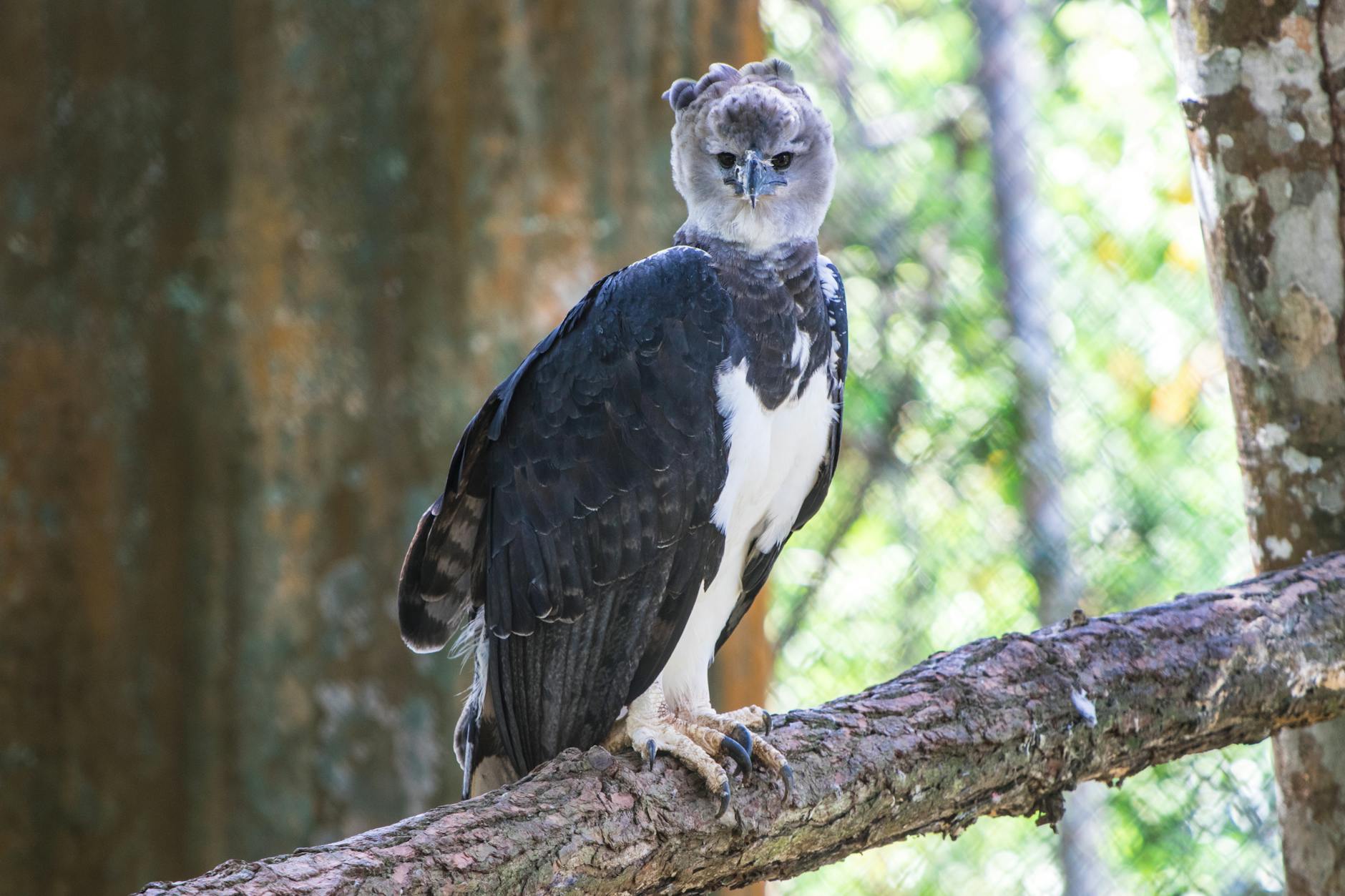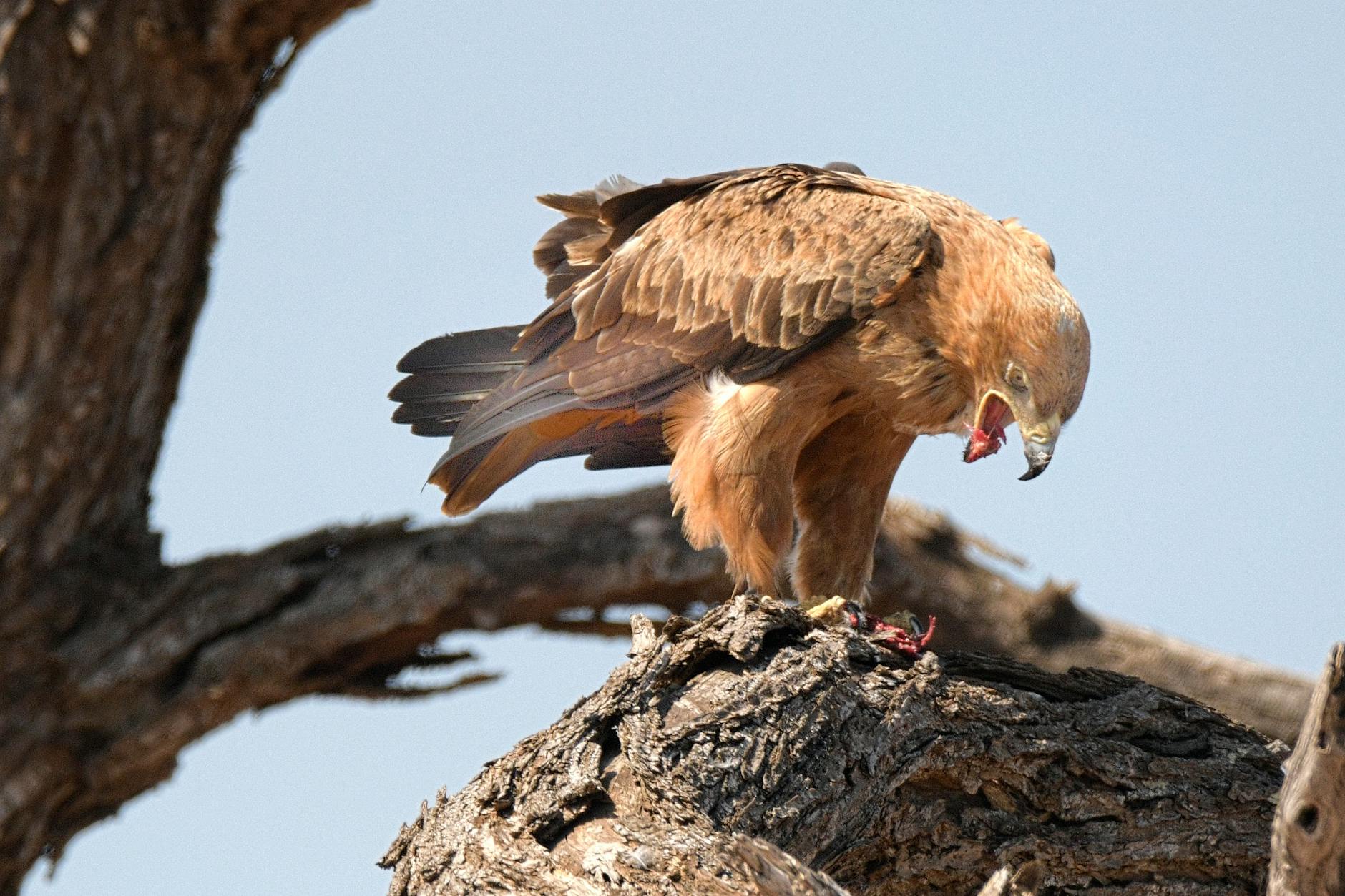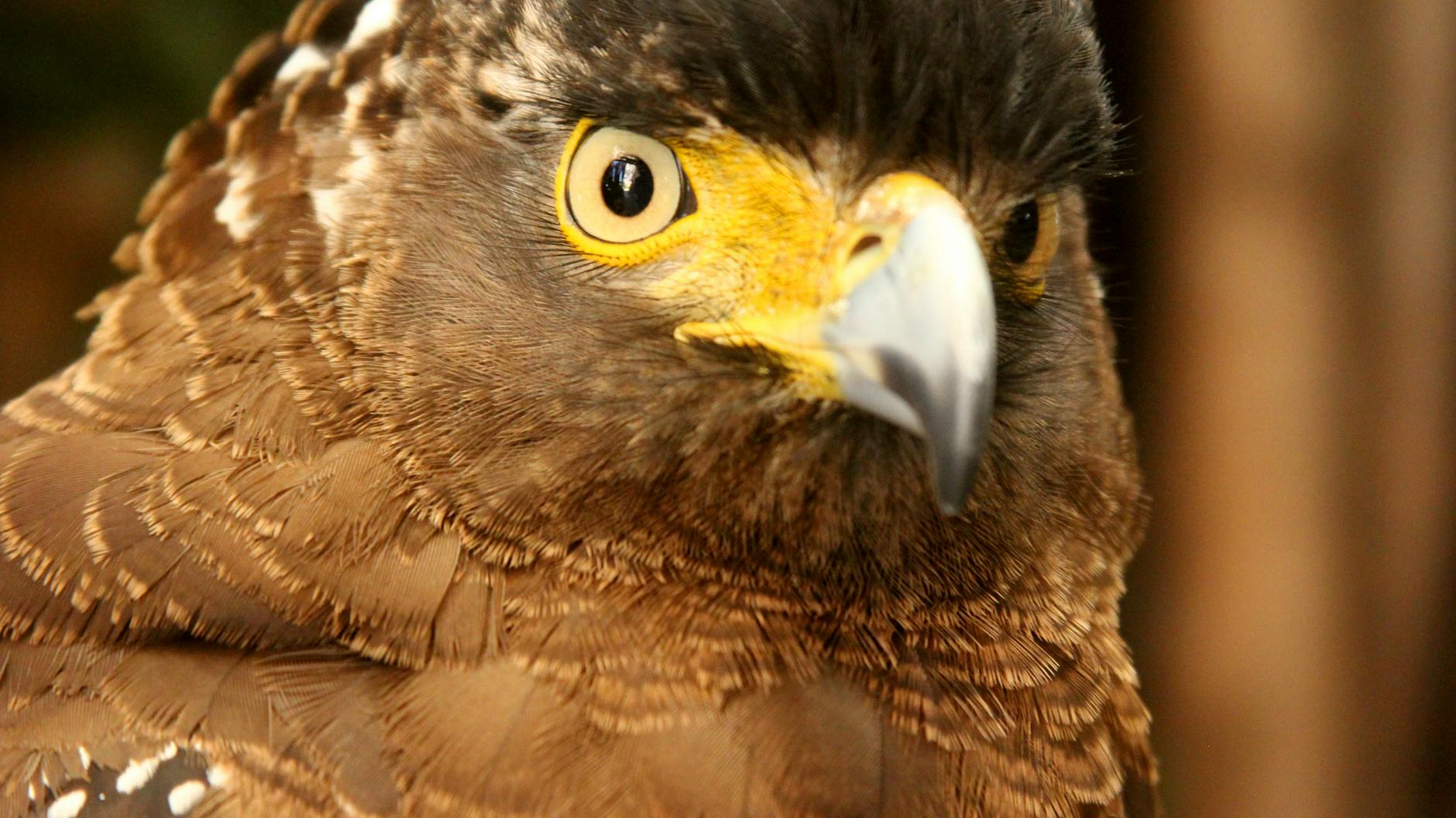Why Harpy Eagles Reign as the Ultimate Kings of the Jungle
The harpy eagle isn’t just a bird—it’s a true force of nature. Found in the lush rainforests of Central and South America, this majestic predator rules the treetops. With its immense strength, razor-sharp talons, and unparalleled agility, it commands respect from every creature in its domain. Known as one of the most powerful birds of prey, the harpy eagle stands at the top of the jungle’s hierarchy. But what exactly makes it deserving of the title “king of the jungle”? Let’s break it down.
Physical Characteristics of Harpy Eagles
The harpy eagle is unlike any other bird of prey. Its sheer size, striking appearance, and specialised traits perfectly complement its title as the “king of the jungle.” Here’s what makes this eagle both fascinating and formidable.
Size and Weight
Harpy eagles are among the largest raptors in the world. These mighty creatures can stand at an impressive height of 89 to 105 cm (35 to 41 inches). Females, noticeably larger than males, can weigh between 6 to 9 kg (13 to 20 pounds), while males typically range from 4 to 6 kg (8.8 to 13 pounds). To put that in perspective, they stand as tall as a small child and carry the weight of a medium-sized dog. Their wingspan reaches up to 2 metres (6.5 feet), enabling seamless movement through dense forests.
When compared to other birds of prey like the bald eagle or golden eagle, the harpy’s bulkier build and shorter, broader wings set it apart. These adaptations are ideal for navigating the thick tropical canopies of Central and South America. Learn more about their size here.
Distinctive Plumage
The harpy eagle’s plumage is nothing short of spectacular. Its upper body features slate-black feathers, while the underparts are a stark white. A band of black feathers stretches across its chest, giving it a regal, armour-like appearance. However, the most captivating feature may be the feathered crest on top of its head, which it raises when alert or agitated. This almost crown-like structure adds to its royal reputation.
Their piercing grey eyes are framed by a dark facial disc, which aids in sound detection while hunting. Combined with their powerful stature, the harpy eagle looks like a mythical creature brought to life. If you are lucky enough to spot one in the wild, its commanding appearance is unforgettable.

Photo by Itiel Cd
Adaptations for Hunting
What makes the harpy eagle such a skilled predator? Its body is designed for hunting perfection. Here’s a look at a few key adaptations:
- Talons: Their talons are enormous, with the rear ones growing up to 4 inches long—as large as a grizzly bear’s claws. These are used to grip and incapacitate prey with precision.
- Beak: The harpy eagle’s beak is sharp and hooked, built for tearing through the tough hides of sloths and monkeys, their primary prey.
- Short Wings: While most large birds have long, wide wings for soaring, the harpy’s wings are shorter and more compact. These allow them to manoeuvre easily through dense forests rather than open skies.
- Legs and Strength: They have thick, muscular legs capable of exerting enough pressure to crush bones or carry prey weighing as much as themselves.
These features enable the harpy eagle to hunt effectively in its lush surroundings, ruling the treetops with an efficiency unmatched by other predators. Their ability to silently stalk and swiftly strike their prey solidifies their role as a top-tier apex predator. Read more about their hunting prowess.
Habitat and Range
Harpy eagles are symbols of the untamed tropical wilderness, thriving in some of the planet’s most bio-diverse locations. Their home isn’t just a backdrop—it plays a key role in shaping their behaviour, survival, and dominance. Let’s dive deeper into their natural environment.
Rainforest Ecosystems
Tropical rainforests form the lifeline for harpy eagles. These environments are packed with towering trees that create dense canopies, perfect for nesting and hunting. The harpy eagle relies heavily on these vast forests to sustain its predatory lifestyle. Why are these rainforests so critical?
- Prey-rich environment: Sloths, monkeys, and other small mammals make up the bulk of the harpy eagle’s diet. Rainforests offer an abundant supply of these creatures.
- Large nesting trees: Harpy eagles nest high in the canopy, requiring massive trees like kapok and ceiba.
- Camouflage and cover: The thick canopy shields them from predators and human interference.
However, deforestation threatens these vital habitats. These forests, often referred to as the “lungs of the Earth” for their role in absorbing carbon dioxide, are dwindling at alarming rates. Protecting rainforests isn’t just crucial for the harpy eagle’s survival—it’s essential for the planet. To understand more about rainforests’ significance, visit WWF’s guide to tropical rainforests.

Photo by David Selbert
Geographical Distribution
Harpy eagles are predominantly found across the tropical regions of Central and South America. Their geographical range stretches from southern Mexico to northern Argentina, covering various countries, including Brazil, Panama, and Ecuador. However, their presence is heavily concentrated in areas with dense, uninterrupted forests.
Here’s an overview of their preferred locations:
- Lowland Forests: They favour areas between sea level and 2,000 feet elevation, where prey availability is highest.
- Amazon Basin: The Amazon rainforest serves as the harpy eagle’s stronghold and provides the rich ecosystem they need.
- Fragmented Habitats: While they adapt to smaller forest patches, their survival depends on large, continuous habitats.
Rapid urbanisation and agricultural expansion have led to habitat fragmentation, restricting their once wide-ranging territories. Discussions and efforts around rainforest conservation must include these majestic birds, as their survival is intrinsically linked to the health of these ecosystems. Learn more about where harpy eagles reside in this PBS fact sheet on the jungle eagles.
Without the tropical rainforests and their geographical expanses, the reign of the harpy eagle as king of the jungle would face unprecedented challenges.
Diet and Hunting Techniques
The harpy eagle is a master predator, perfectly adapted to hunting in the dense rainforests of Central and South America. Its diet and hunting strategies reveal just how skilled this legendary bird of prey is at ruling its territory. Let’s explore how this apex predator gets its meals.
Primary Prey
Harpy eagles are carnivorous hunters with a diet that reflects their exceptional power and agility. These birds primarily target arboreal mammals, favouring prey that lives high in the canopy.
Their most common meals include:
- Sloths – Both two-toed and three-toed species make up a significant portion of their diet.
- Monkeys – Species such as howler monkeys, capuchins, and squirrel monkeys are frequent targets.
- Other mammals – Harpy eagles occasionally hunt armadillos, opossums, and porcupines.
- Reptiles – They’ve been known to prey on snakes, iguanas, and even young caimans.
Interestingly, their ability to hunt large prey is supported by their astonishing strength. A harpy eagle can carry animals weighing up to half its own body weight, making it a fierce competitor in the jungle. For a closer look into their diet, this guide offers insightful details.

Photo by Frans van Heerden
Hunting Strategies
When it comes to hunting, harpy eagles are deliberate and stealthy. Unlike many other raptors, they don’t rely on long-distance flights or open-area strikes. Instead, they excel in dense forest environments where precision and agility are critical.
Here are their primary hunting techniques:
- Perch Hunting: Harpy eagles are patient hunters. They perch silently on high branches, scanning for movement below. Once they spot prey, they execute swift and decisive strikes. Learn more about their hunting tactics.
- Ambush Attacks: They’re experts at using the dense canopy to their advantage. By flying quietly through the trees, they can ambush prey without detection.
- Agility in the Canopy: Thanks to their broad, short wings and powerful muscles, harpy eagles can manoeuvre swiftly through branches. This helps them catch arboreal mammals with ease.
- Powerful Dive: On occasion, harpy eagles dive from high perches at incredible speeds to snatch prey from the forest floor or lower canopy.
This level of precision and adaptability is what cements the harpy eagle’s reputation as a top predator. Their combination of strength, stealth, and strategy ensures they maintain their dominance in the jungle. For a fascinating breakdown of their hunting prowess, check out this article.
The harpy eagle’s hunting skills are a testament to nature’s ingenuity, embodying both elegance and sheer power as they reign supreme in the treetops.
Role in the Ecosystem
Harpy eagles are more than just majestic hunters; they play a vital role in maintaining balance in the jungle. As apex predators, they command respect, yet their influence extends far beyond the immediate prey they consume. Here’s how they shape the jungle’s complex web of life.
Top of the Food Chain
Harpy eagles sit firmly at the top of the rainforest food chain, asserting dominance as apex predators. They have no natural enemies, freeing them from the threat of predation. Their diet, which primarily consists of mammals like sloths and monkeys, plays a critical role in controlling these populations. Without harpy eagles, prey numbers could spiral out of control, straining the forest’s resources.
This predatory role keeps ecosystems in equilibrium. Think of them as nature’s enforcement crew, preventing population explosions that could disrupt the habitat. Plus, their ability to hunt and carry prey many times their size showcases both their strength and their importance as keystone predators. To learn more about their dominance, visit the Harpy Eagle section by ABC Birds.
Impact on Biodiversity
The harpy eagle doesn’t just take; it gives back to the ecosystem in subtle yet powerful ways. By preying on arboreal mammals, they ensure forests remain diverse and thriving. Overpopulation of certain species, like sloths or capuchin monkeys, can strip vegetation and weaken the entire habitat. Harpy eagles help prevent that, allowing countless other species to flourish.
They are what’s known as a keystone species, creatures whose presence has outsized effects on their environment. Without them, ecosystems risk becoming unbalanced, leading to domino effects—or what scientists call “trophic cascades.” Want a deeper dive into their ecological significance? Check out this talk on their biodiversity role.
Furthermore, their presence is a sign of forest health. Harpy eagles require dense canopies and abundant prey, meaning their survival highlights the vitality of their surroundings. Their decline, often due to deforestation, signals wider environmental issues that go beyond the species themselves. For insights into how their habitat loss impacts biodiversity, this article offers perspective.
By safeguarding harpy eagles, we’re not just saving one species; we’re protecting the entire jungle ecosystem they uphold. Their reign as the kings of the jungle is not just a title—it’s a responsibility intertwined with the survival of so many other species.
Conservation Status and Threats
Harpy eagles command the respect of being apex predators, but their rule faces significant challenges—many of which are tied directly to human activity. These fierce birds have seen their numbers dwindle as the rainforests they depend on shrink and human interactions take a toll. Below, we explore the key threats to these majestic creatures.
Habitat Loss

Photo by Kervin Edward Lara
The rainforest is more than a home to the harpy eagle—it’s their hunting ground, nesting site, and sanctuary. Unfortunately, rapid deforestation ravages these vital habitats, leaving the species with fewer places to reside and hunt.
Deforestation happens at alarming rates, particularly in countries like Brazil and Panama, where vast rainforests are burned or cleared to make way for agriculture, urban development, and logging. Slash-and-burn agriculture has become one of the greatest threats to these forests. This practice destroys trees used by harpy eagles for nesting, such as the towering kapok trees.
Key problems caused by habitat loss:
- Prey reduction: As forests disappear, so do the sloths and monkeys the eagles depend on.
- Fragmentation: Eagles require large, uninterrupted stretches of forest to thrive. Patches of forest make it harder to survive.
- Nest scarcity: Without old, massive trees, harpy eagles cannot reproduce effectively, which jeopardises future generations.
Conservationists believe protecting these rainforests is critical. By halting deforestation and promoting reforestation efforts, we give harpy eagles—and countless other species—a fighting chance. To learn more about rainforest conservation, visit Global Conservation’s Harpy Eagle Project.
Human Interaction
Humans pose another major threat to harpy eagles. For centuries, these birds have clashed with people, and not always by choice. Hunting, poaching, and ignorance are some of the main drivers behind these deadly interactions.
Why do people hunt harpy eagles? Surprisingly, curiosity and misinformation play large roles. In some rural areas, harpy eagles are viewed as threats to livestock or feared due to their size and predatory habits. Despite posing little danger to humans, many are shot out of fear—or for sport.
Beyond hunting, other human-driven activities take a toll:
- Poaching: Eggs and young eagles are sometimes illegally collected or captured for trade.
- Power lines: Eagles occasionally collide with high-voltage wires, causing fatal injuries.
- Habitat encroachment: As roads and cities expand, these birds lose the solitude they need for survival.
Education and awareness campaigns are key to reversing these trends. By teaching local communities about the benefits of having these predators in the ecosystem, organisations hope to diminish harmful encounters. For deeper insight into human-driven threats to harpy eagles, see this study on human persecution.
The challenges these birds face are staggering but not insurmountable. With coordinated actions from conservationists, governments, and communities, the harpy eagle can continue to reign as the king of the jungle.
Cultural Significance
The harpy eagle is not just renowned for its physical prowess and ecological role; it holds a deep cultural significance across various societies. From mythology to conservation movements, this majestic bird is a symbol of both awe and responsibility.
Symbolism in Mythology
Throughout history, the harpy eagle has been woven into the fabric of mythology and folklore. Its sheer power, enigmatic appearance, and ability to dominate the forest have inspired countless stories.
- Greek Mythology: The harpy eagle gets its name from the “Harpies” of Greek mythology. These figures, often described as part-woman and part-bird, were viewed as stormy wind spirits under Zeus’ command. While harpy eagles aren’t directly connected to these mythological beings, the name reflects their imposing and formidable characteristics. Learn more about harpy mythology on Wikipedia.
- Native American Tales: In some Native American cultures, the harpy eagle represents a guardian of the jungle, believed to watch over its inhabitants. Legends speak of its ability to punish wrongdoers by carrying them into the skies.
- South American Legends: The harpy eagle is considered almost magical in parts of South America. Some myths exaggerate its strength, claiming the bird carries away children, while others revere it as a protector of rainforests. These beliefs highlight the awe and fear it commands. Read about harpy eagle myths here.
This mix of reverence and fear showcases just how deeply ingrained the harpy eagle is in cultural history, standing as an emblem of nature’s raw beauty and power.

Photo by Julia Volk
Conservation Efforts
Despite its illustrious reputation, the harpy eagle faces several modern threats, mainly from habitat loss and human interference. Conservation efforts are essential to ensure future generations marvel at this king of the jungle.
- Rainforest Protection: Organisations like the Peregrine Fund and American Bird Conservancy actively support the conservation of rainforests, which are essential for the survival of harpy eagles. Large, undisturbed forests are critical for nesting and hunting. Explore how the Peregrine Fund helps harpy eagles here.
- Captive Breeding: To restore populations in areas where harpy eagles have vanished, initiatives are underway to breed them in captivity. For example, programs in South America and Central America reintroduce captive-bred individuals to carefully monitored rainforests. Learn about success stories of releasing rehabilitated eagles.
- Education and Awareness: In regions where harpy eagles may clash with human activities, education campaigns aim to reduce harmful interactions. Teaching communities about the eagle’s integral role in the ecosystem encourages coexistence. Read about conservation awareness efforts.
Collaborative action between governments, conservationists, and local communities is the only way to protect these incredible birds. By championing their cause, we preserve not just a species but an irreplaceable symbol of our planet’s wildest jungles.
Conclusion
The harpy eagle is a true icon of power and mastery in the jungle. Its dominance stems from its unmatched hunting skills, unique adaptations, and crucial role in maintaining rainforest harmony.
More than just a predator, this bird symbolises the balance and vitality of its ecosystem. Protecting harpy eagles doesn’t just save a species—it preserves the soul of the rainforest.
What will you do today to support conservation efforts? Share your thoughts below or explore resources about these kings of the jungle.










